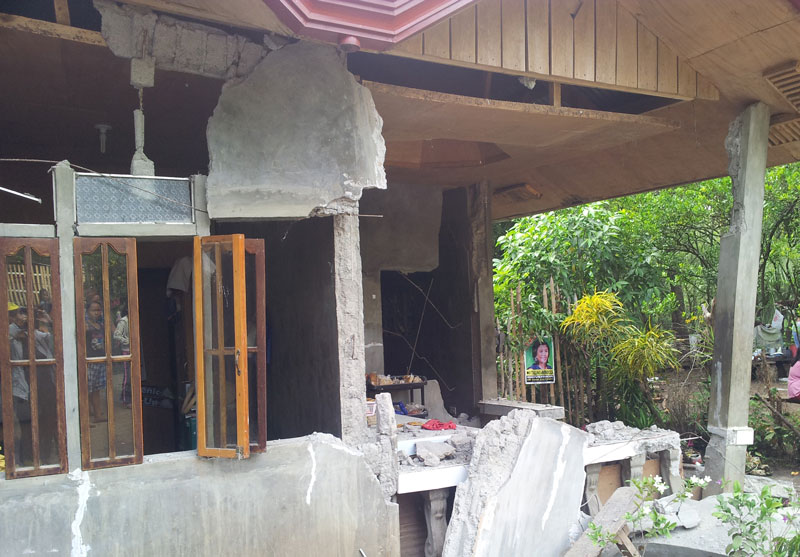volcano
Philippines: earthquakes in Mindanao to last for months, volcanic anomalies reported underground
Theextinctionprotocol, 06/03/2013

DAVAO CITY, Philippines — The earthquakes experienced today in Carmen town, North Cotabato and the rest of Mindanao will possibly last for weeks or months. This was according to Jenila de Ocampo, Officer-in-charge of the Davao Seismic Station of the Philippine Institute of Volcanology and Seismology (Phivolcs), in a phone interview. She added the intensity might either be “felt” or “unfelt” by humans. On Monday morning, two strong quakes struck Carmen.
A 5.7 magnitude was felt at 4:08 AM with epicenter at seven Kilometers (Km) Northeast of the town. It has a depth of 10 Km. The town was placed under Intensity VI. “An Intensity VI in the PEIS (Phivolcs Earthquake Intensity Scale) means there will be a minimal damage to poorly built structures, or those with light materials and even concrete structures which do not meet building standards like the proper placement of steel bars,” De Ocampo explained. At 7:31 AM, another quake jolted Carmen town.
Pacaya volcano erupts in Guatemala
- Read more about Pacaya volcano erupts in Guatemala
- Log in or register to post comments
Mount ETNA, Italy eruptions puzzles experts
- Read more about Mount ETNA, Italy eruptions puzzles experts
- Log in or register to post comments
Copahue volcano (Chile): increasing earthquake activity
volcanodiscovery.com-May 26,2013

Although degassing and ash emissions have decreased, seismic activity at the volcano has picked up, SERNAGEOMIN reported. An average of 356 earthquakes per hour, sometimes merging into what looks as volcanic tremor, has been recorded recently. This could be related to intruding magma from a new batch of magma rising at the moment and as a result, phreatomagmatic or magmatic activity could occur at the surface in the near future.
The hazards from the volcano to populated areas are only significant in the case of a larger eruption creating a large ash plume, possible pyroclastic flows and lahars capable of travelling greater distances. Ash fall in particular would mainly threaten the areas to the east (ie. the Argentine side) because of the prevailing westerly wind directions.
Read More: volcanodiscovery.com
Quick Links
<p>Welcome to the Galactic Free Press blogs section! This is a place where anybody with <a href="/galacticfreepress/user/register">a free GFP account</a> can post information.</p>
